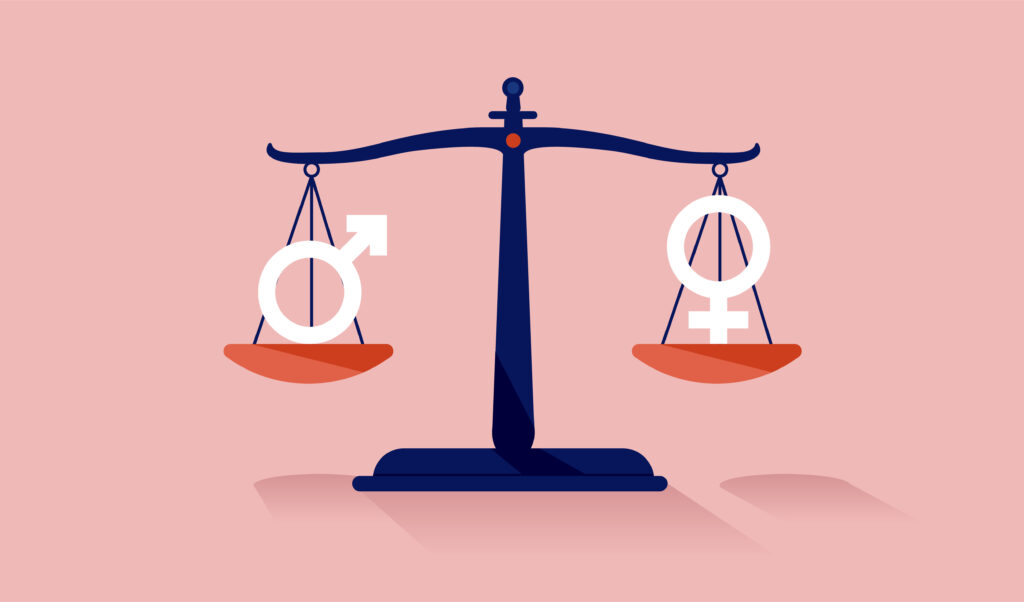
As a gender-queer non-conforming individual, I frequently experience backlash for my identity and how I choose to dress. I regularly hear hurtful comments being directed toward me. Public spaces now feel like minefields. Insults, slurs, and even objects have been thrown at me simply for wearing a dress.
We often suppress individuality in our community, whether it be through stating who may and may not wear makeup, or our restrictive gender roles, so people find themselves trapped within a certain set of rules just to appease societal norms. As a result of the harassment and misogyny that I have faced, my confidence has been lowered, and self-image violated.
It’s likely that you’ve seen gender stereotypes everywhere you go. The notion of sexism, or discrimination based on gender, might also have been brought to your attention or experienced by you. The issue of sexism is prominent even within workplaces, as stated in an article published by Pew Research Center: “About four-in-ten working women (42%) in the United States say they have faced discrimination on the job because of their gender.” People of all genders and gender identities can feel valued and equal by challenging stereotypes. But before we do that, what are gender roles?

A person’s gender role is defined as how he or she acts, speaks, dresses, grooms, and conducts himself or herself based on the sex to which he or she is assigned. In general, girls and women are expected to dress in feminine nature, be accommodating, and nurture one another. Strength, aggression, and boldness are generally associated with men.
Samantha Toledo, who is a student at Fresno City College, often thinks of gender roles as the following; “Um, I always think of the oldest gender roles, you know, the fifties, like women stay home and cook and men go to work. I think of those basic ones.” These stereotypes can be seen just about anywhere, and they are strongly encouraged by the media that we consume.
An article published by Harvard focuses “on the media’s role and fixation on ‘retro’ gender stereotypes by routinely publishing stories about women choosing to be stay-at-home mothers or overemphasizing the notion that working women climb the corporate ladder only to jump off it into motherhood.” The stereotyping of male and female roles and characteristics does not end there, however, as even objects are feminized or masculinized. An article from Stanford University states that “Studies have shown that people apply gender to toys, numbers, colors, and even shapes (for example, squares are viewed as more masculine than circles).
Gendered assumptions even seep into other social categories like race: “Research suggests that people see African Americans as more masculine and Asians as more feminine.” The harm caused by extreme gender stereotypes is that they prevent people from expressing themselves and their feelings fully. The idea that masculine people can’t cry or express sensitive emotions, for instance, is harmful to them. Moreover, feeling that they can’t be independent, or assertive is harmful to feminine people. Everyone can be their best selves when gender stereotypes are broken down.

So… how exactly can we combat gender stereotypes? Well, the answer is not as complicated as it may seem. First and foremost, you should be a positive role model to your friends and family members. No matter what gender someone identifies themselves as, respect them. Provide a safe and accepting environment where people can express themselves without being constrained by gender stereotypes. Another incredible way to combat gender stereotypes is by pointing out things that encourage gender stereotypes. This can be advertisements, videos, movies, books, music, or even the way people behave. Any type of media can encourage gender stereotypes, so it is important to identify them and point them out.
If you feel like it is safe for you to do so, speak up when someone around you is saying something that promotes gender stereotypes and may be sexist and/or misogynistic. That way, you will show the person that what they had said was not acceptable and that their behavior must change. Lastly, and again this will depend on how comfortable you are, you can defy gender roles and stereotypes by doing things that people who identify as your gender are normally not expected to do. This can be a multitude of things. My personal favorite way of combating gender stereotypes is by wearing a cute skirt with my outfit, despite not being a woman. By doing so, I am demonstrating to others that it is ok to dress how you want. Your body should be respected, and that starts with you allowing yourself to wear what you would like to wear.
